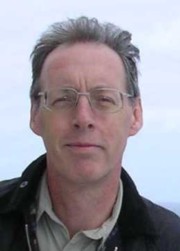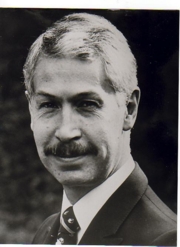Collaboration
'The News Manual' was a truly collaborative effort drawing on the expertise of many people. Some of these have been mentioned in the acknowledgements at the end of the page 'The story of The News Manual'. Others who helped to make 'The News Manual' so useful included working journalists in several countries, especially Britain, Papua New Guinea and Australia, who knowingly or unwittingly shared their experiences with the authors. It is now impossible to remember where most of the material came from, but certainly some of it was bequeathed to the authors by their predecessors at the University of Papua New Guinea, Alan Chatterton and the late Ross Stevens. Artist Bob Browne, whose character Grass Roots is famous across the Pacific, provided illustrations which are instructive, witty and immensely entertaining.
Of equal importance was a generation of journalism students at the University of Papua New Guinea upon whom most of the material was trialled and who helped in refining it, as did numerous participants on courses conducted by the authors at the Special Broadcasting Service (SBS) and other places in Australia and in training programs throughout the Pacific.
^^back to the top
David Ingram
 David has worked as a journalist, educator or media manager most of his adult life. After graduating from the University of Sheffield in England, David joined the Grimsby Evening Telegraph in his home town as an apprentice journalist. After qualifying through the National Council for the Training of Journalists and working as a senior reporter, feature writer and sub-editor, he and his wife were sent by Voluntary Service Overseas to Tari in the Southern Highlands Province of Papua New Guinea, where David taught high school. On returning to Britain, he worked in the newsrooms of regional daily newspapers and the then fledgling commercial radio. He returned to the Pacific in 1984 to establish the region's first journalism degree program at the University of PNG, working first with Alan Chatterton and then with Peter Henshall. Together they taught both the degree and diploma journalism courses to students drawn from throughout the region. David specialised in broadcasting and, with the help of aid funding from Japan, built radio and television production facilities at the university. On migrating to Australia, he joined SBS as radio trainer before spending three years as a freelance training consultant. During this time he taught in the Pacific region, co-published 'The News Manual' and served as one of only two professional broadcasters on a body which gained a licence for Sydney's first full-time ethnic community radio station, 2000FM. In 1994 he returned to SBS Radio as the corporation's first National Training Manager. Between then and his retirement from full-time journalism education in 2007, with his guidance SBS became the first professional broadcasting organisation in Australia to become a Registered Training Organisation. He now works as a media and management consultant based in Sydney and Tea Gardens NSW and has a media blog DogBitesMan. David has worked as a journalist, educator or media manager most of his adult life. After graduating from the University of Sheffield in England, David joined the Grimsby Evening Telegraph in his home town as an apprentice journalist. After qualifying through the National Council for the Training of Journalists and working as a senior reporter, feature writer and sub-editor, he and his wife were sent by Voluntary Service Overseas to Tari in the Southern Highlands Province of Papua New Guinea, where David taught high school. On returning to Britain, he worked in the newsrooms of regional daily newspapers and the then fledgling commercial radio. He returned to the Pacific in 1984 to establish the region's first journalism degree program at the University of PNG, working first with Alan Chatterton and then with Peter Henshall. Together they taught both the degree and diploma journalism courses to students drawn from throughout the region. David specialised in broadcasting and, with the help of aid funding from Japan, built radio and television production facilities at the university. On migrating to Australia, he joined SBS as radio trainer before spending three years as a freelance training consultant. During this time he taught in the Pacific region, co-published 'The News Manual' and served as one of only two professional broadcasters on a body which gained a licence for Sydney's first full-time ethnic community radio station, 2000FM. In 1994 he returned to SBS Radio as the corporation's first National Training Manager. Between then and his retirement from full-time journalism education in 2007, with his guidance SBS became the first professional broadcasting organisation in Australia to become a Registered Training Organisation. He now works as a media and management consultant based in Sydney and Tea Gardens NSW and has a media blog DogBitesMan.
^^back to the top
Peter Henshall
 Peter's sudden death on 16 January 1992 robbed journalism education of one of its great practitioners and champions. A towering figure in many ways, he collapsed and died while attending basketball practice near his home in Britain, the homeland to which he'd only recently returned after seven years in Papua New Guinea. There he had completed a term in one of the most significant media training roles in the developing world as Coordinator of UNESCO's Pacjourn program. Peter not only set up and launched the program providing mid-career print media training, but his efforts in its formative years made it respected throughout the 13 participating countries in the Pacific Islands region. On top of a hectic work schedule he gained an M.Phil. from the University of Wales and organised the final editing, layout and printing of 'The News Manual' through a printery in Port Moresby. Peter and his wife Felicity were committed Christians who believed in sharing their talents without strings. Shortly after graduating from the University of Lancaster with an Honours degree in English and philosophy, Peter demonstrated his commitment by working as a schoolteacher in Uganda, though this was cut short by the turmoil which accompanied the rise of General Idi Amin. He did, however, leave with a post-graduate Diploma in Education from Makerere University in Kampala, specialising in teaching English as a second language. On returning to Britain he worked first on the Carlisle Evening News and the weekly Cumberland News before heading for the prestigious Birmingham Post in the British Midlands. Over nine years he did most jobs from reporting to sub-editing, was letters editor, leader writer and wine columnist - and still had energy to edit his local magazine, the Hagley Village News. In 1985 he was recruited to join David Ingram at the University of PNG, where they set up and taught the region's first journalism degree program and a new two-year Diploma in Media Studies. After four years at UPNG, Peter was asked to run the Pacjourn program and the rest - as they say - is history. Peter and Felicity have two children, Abi and Jamie, who are now set on their own brilliant careers in the UK. Peter's sudden death on 16 January 1992 robbed journalism education of one of its great practitioners and champions. A towering figure in many ways, he collapsed and died while attending basketball practice near his home in Britain, the homeland to which he'd only recently returned after seven years in Papua New Guinea. There he had completed a term in one of the most significant media training roles in the developing world as Coordinator of UNESCO's Pacjourn program. Peter not only set up and launched the program providing mid-career print media training, but his efforts in its formative years made it respected throughout the 13 participating countries in the Pacific Islands region. On top of a hectic work schedule he gained an M.Phil. from the University of Wales and organised the final editing, layout and printing of 'The News Manual' through a printery in Port Moresby. Peter and his wife Felicity were committed Christians who believed in sharing their talents without strings. Shortly after graduating from the University of Lancaster with an Honours degree in English and philosophy, Peter demonstrated his commitment by working as a schoolteacher in Uganda, though this was cut short by the turmoil which accompanied the rise of General Idi Amin. He did, however, leave with a post-graduate Diploma in Education from Makerere University in Kampala, specialising in teaching English as a second language. On returning to Britain he worked first on the Carlisle Evening News and the weekly Cumberland News before heading for the prestigious Birmingham Post in the British Midlands. Over nine years he did most jobs from reporting to sub-editing, was letters editor, leader writer and wine columnist - and still had energy to edit his local magazine, the Hagley Village News. In 1985 he was recruited to join David Ingram at the University of PNG, where they set up and taught the region's first journalism degree program and a new two-year Diploma in Media Studies. After four years at UPNG, Peter was asked to run the Pacjourn program and the rest - as they say - is history. Peter and Felicity have two children, Abi and Jamie, who are now set on their own brilliant careers in the UK.
^^back to the top
Bob Browne
Bob Browne was one of the Pacific Islands region’s best-known and most-loved cartoonists. He provided a generation of Papua New Guineans with a deeply insightful and often hilarious commentary on life in the region - especially its political processes - seen through the eyes the Papua New Guinean Everyman, Grass Roots. Born in Erith, London, Bob studied graphic design at the London College of Printing and worked in a number of jobs before travelling to Morocco in 1970 where he was deeply shocked by the poverty he witnessed. On his return home he joined VSO (Voluntary Service Overseas), and was sent to Wewak in Papua New Guinea, where he worked in the Catholic Mission’s Wirui Press and started drawing cartoons for ‘Wantok’ newspaper. After two years he moved to Port Moresby where he helped to establish the new Centre for Creative Arts. When it became the National Arts School, Bob became Head
of the Graphics Department. In 1980 he started drawing daily ‘Grass Roots’ cartoons for the Post Courier, and a year later started his own ‘Grass Roots Comic Company’. He became a PNG citizen in 1990 and re-joined the National Arts School as Head of Visual Arts as it was being integrated into the University of PNG. Bob was also a church pastor, teacher, counsellor, overseas missionary and manager of Port Moresby City Mission, all the while keeping up his love of cartoons. Like Peter Henshall, Bob was a keen player, coach and supporter of basketball. He served on government advisory bodies and received PNG’s 10th Anniversary of Independence Medal for Services to the Community. Bob died in Port Moresby General Hospital, PNG, on 2 March 2011. He leaves his wife, Segana, and their teenage son, David. Bob is missed by all who knew him.
You can read a longer tribute to Bob Browne at The News Manual ... Now!
^^back to the top
|

